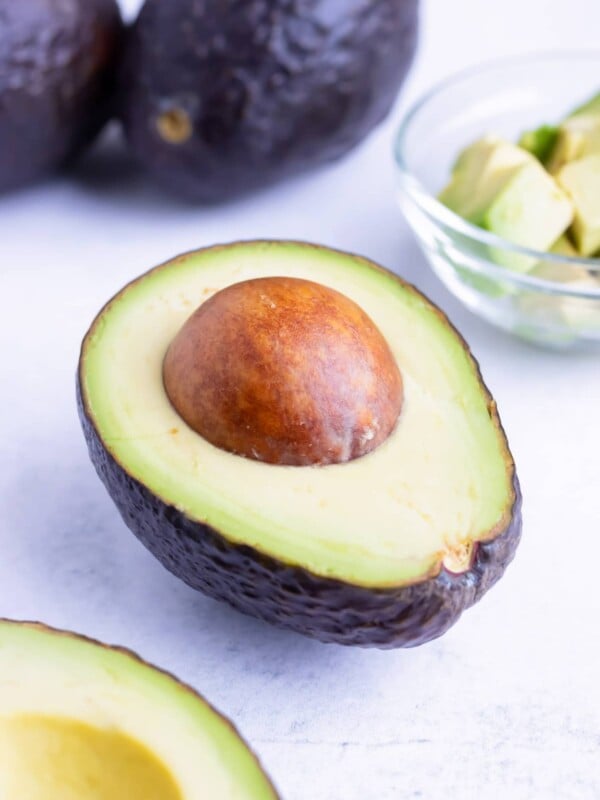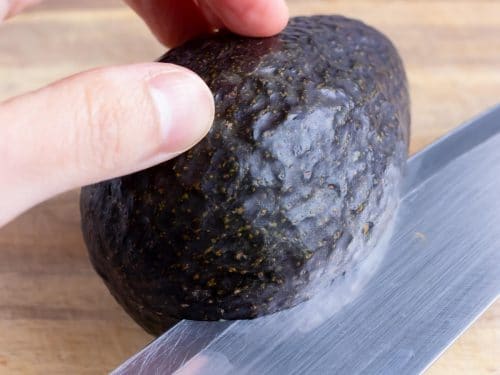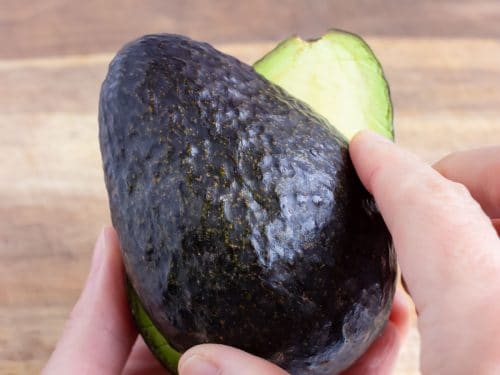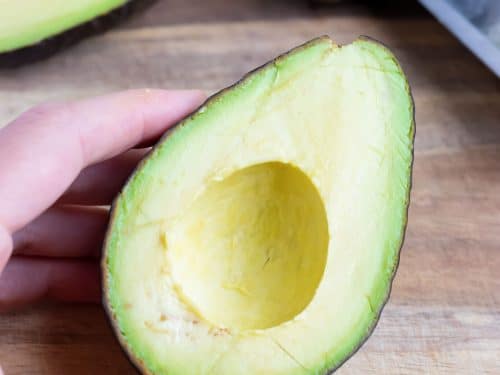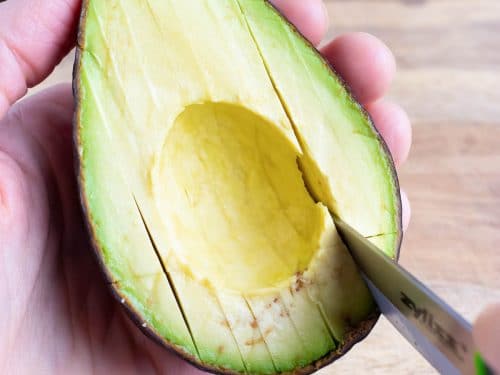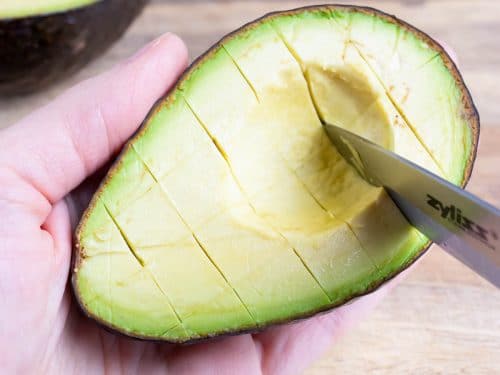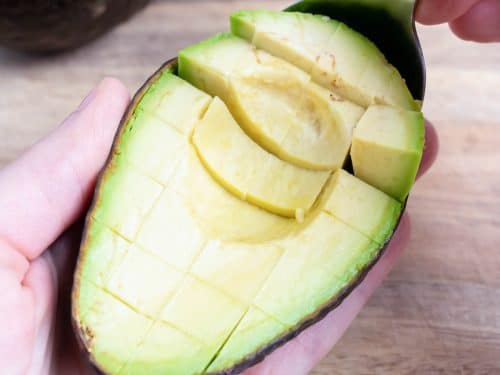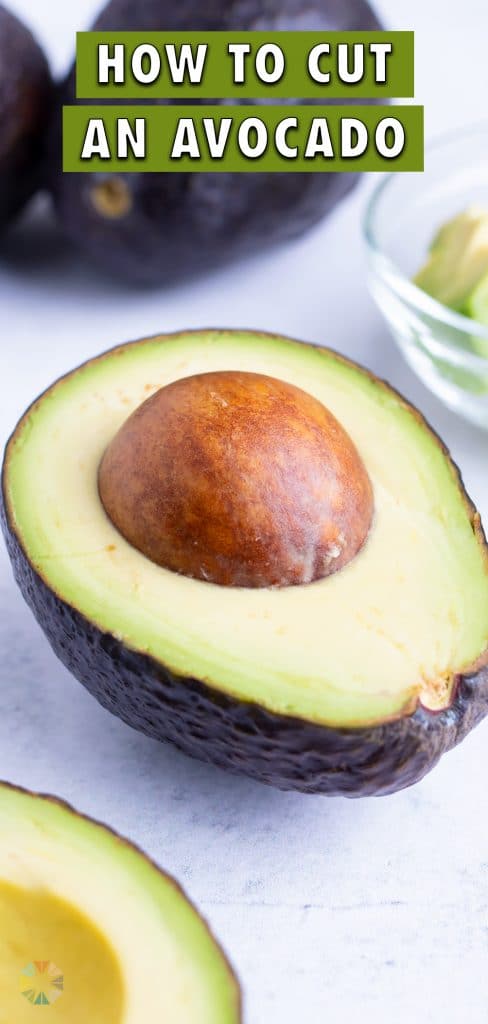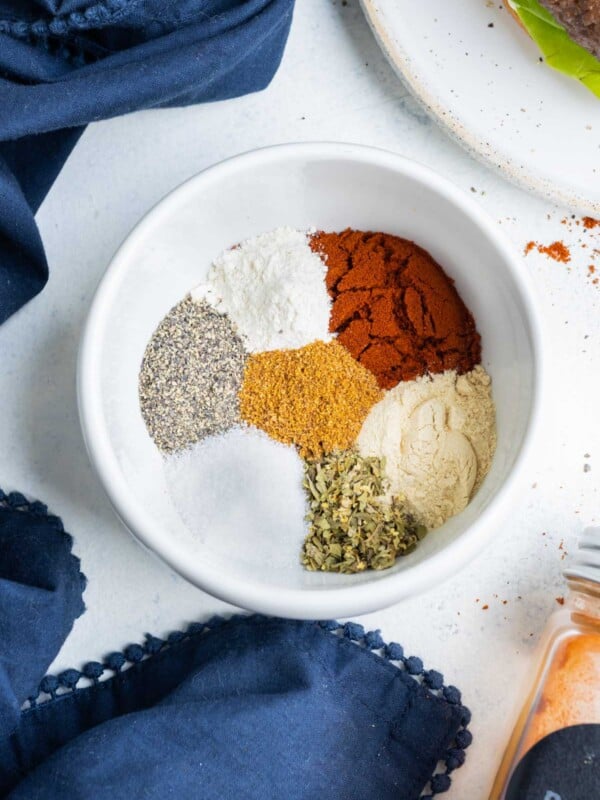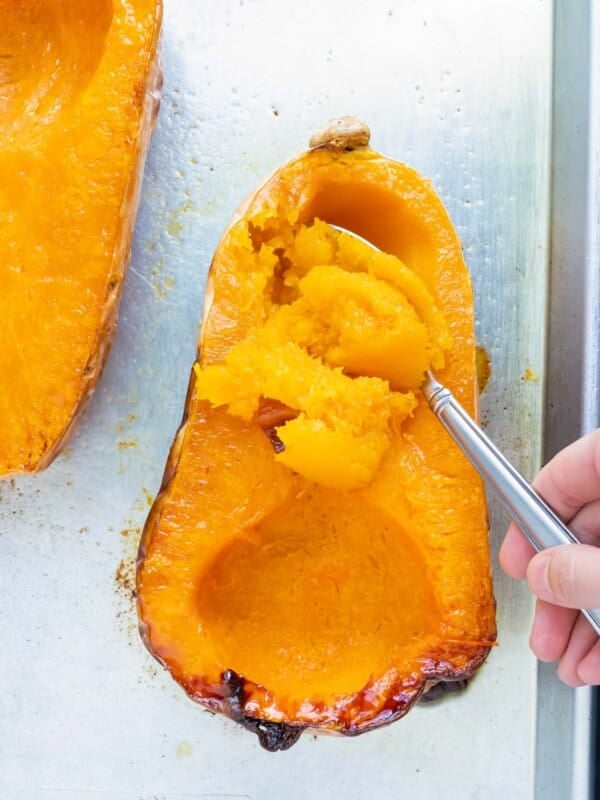The Best Way to Cut an Avocado
I remember it like it was yesterday.
My friend Andrew showed me the coolest trick when cutting an avocado. He cut a slit into the skin, stopping right at the pit, rolled it on it’s side, and then spun it around.
Not only did he look cool doing it, but he quickly and easily made a perfect incision around the circumference of the fruit!
Since learning his trick, I am always the one people turn to to quickly cut a ton of avocados when making a big bowl of guacamole or this yummy Avocado Corn Salad.
And you will become that, too! Because what you’ll find below is hands down the BEST and easiest way to cut an avocado.
Cutting an Avocado (Instructional Video)
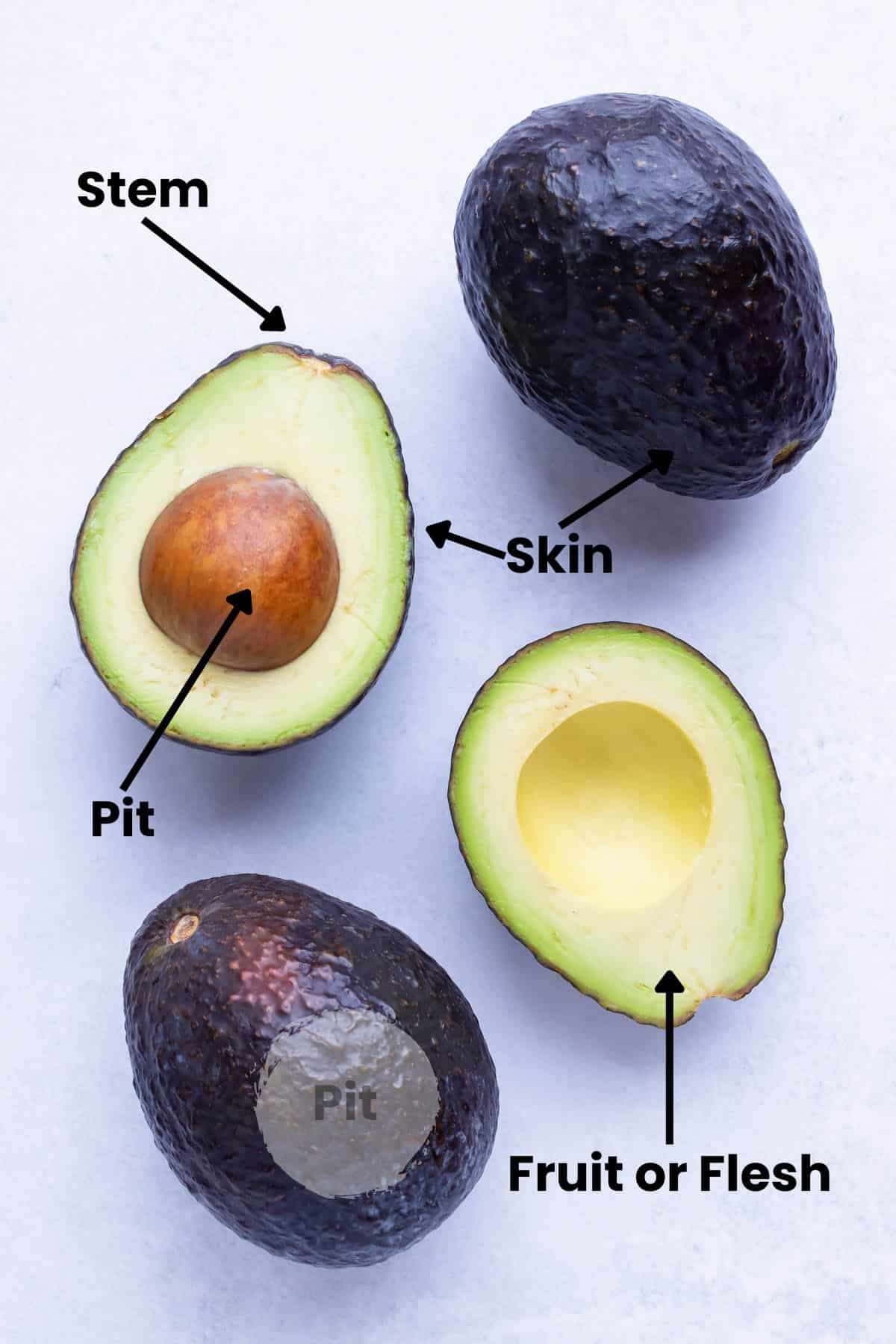
What is an Avocado?
Before we start slicing and dicing, you need to know the basic anatomy of an avocado.
So… what IS an avocado?
Avocados are technically a fruit since they are a single-seeded “berry.” However, they are savory enough that some like to consider them as more of a vegetable.
Avocados have a relatively tough outer layer called their “skin” that you definitely don’t want to eat. Often you can also find ones with a “stem.”
Once an avocado is cut in half you will see a large brown seed, or “pit,” surrounded by a bright green edible flesh.
They are composed almost entirely of monounsaturated fat and make an excellent, low-carb, creamy addition to your favorite dishes.
Table of Contents
How to Cut an Avocado
The basic steps for cutting an avocado are incredibly simple to follow:
1. Slice and Spin (My Secret Trick!)
Lay the avocado on a stable cutting board and use a chef’s knife to slice it in half lengthwise. Stop cutting downward as soon as you feel the knife hit the pit in the center.
Turn the avocado onto its side and slowly spin it while continuing to cut it in half with the knife. It should follow the curve of the pit all the way around, to cut through the soft flesh.
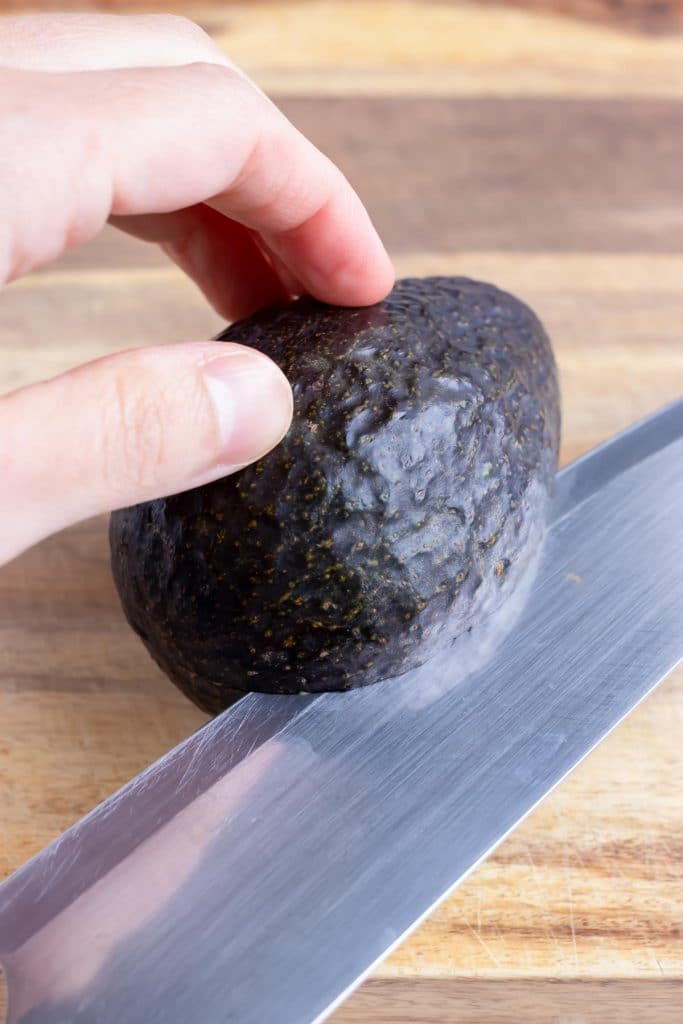
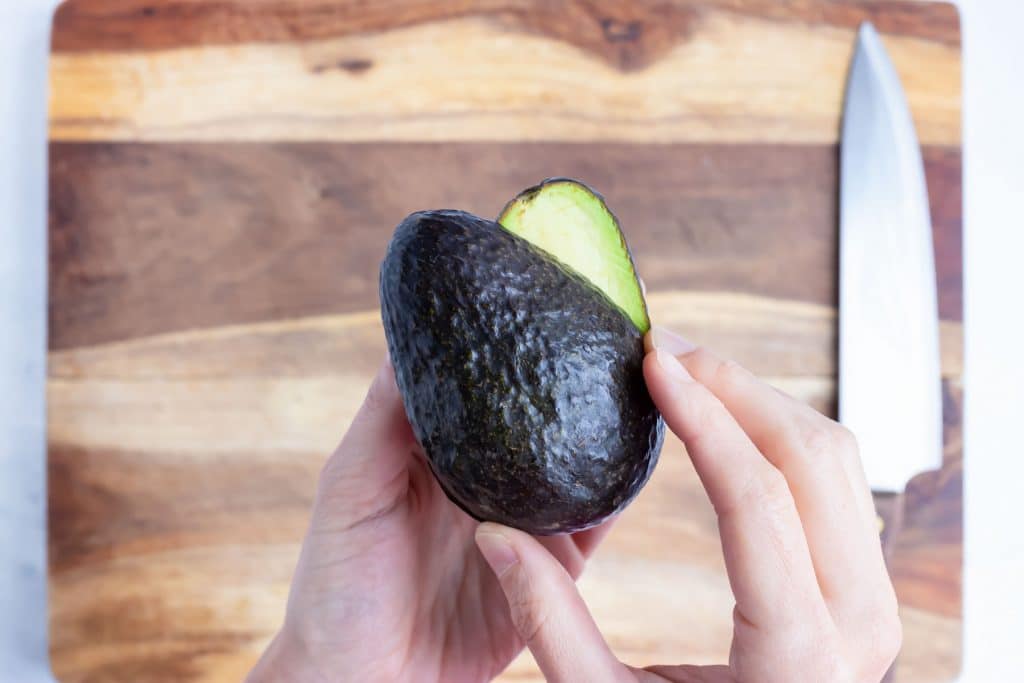
2. Twist to Open
When the avocado has been cut in half, give the two halves a gentle twist in opposite directions.
If cut properly, just a little twist is all it should take for one half to separate from the other cleanly.
3. Hit the Pit
Setting the half with the pit still embedded in it cut-side up on the cutting board, very carefully hit the center of the pit with your knife. Make sure there are no hands or fingers on the cutting board while doing this, to avoid injury.
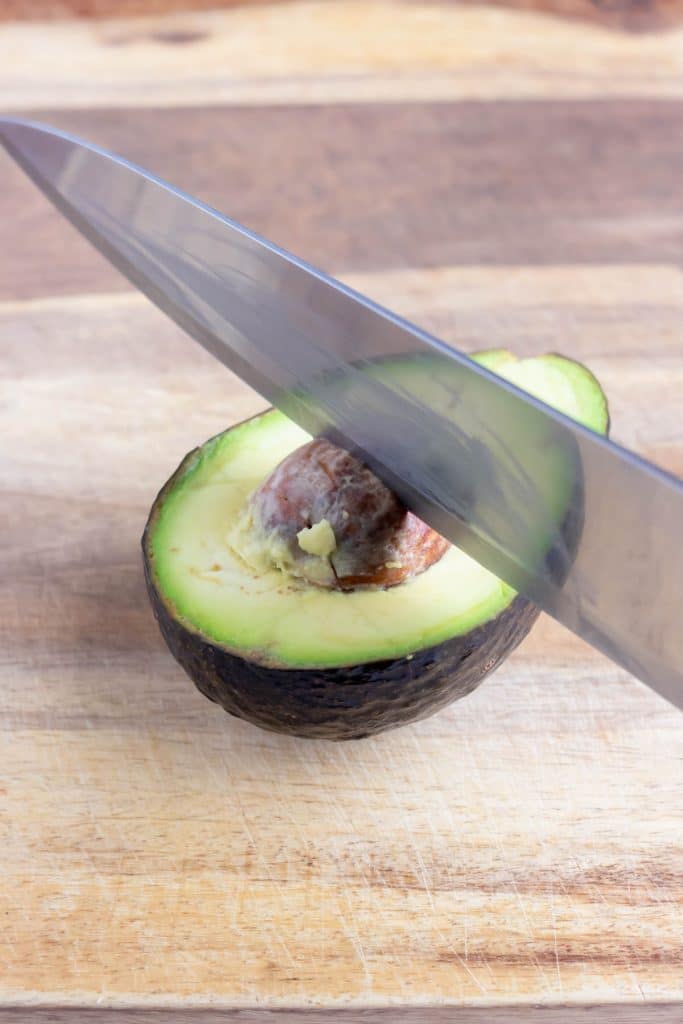
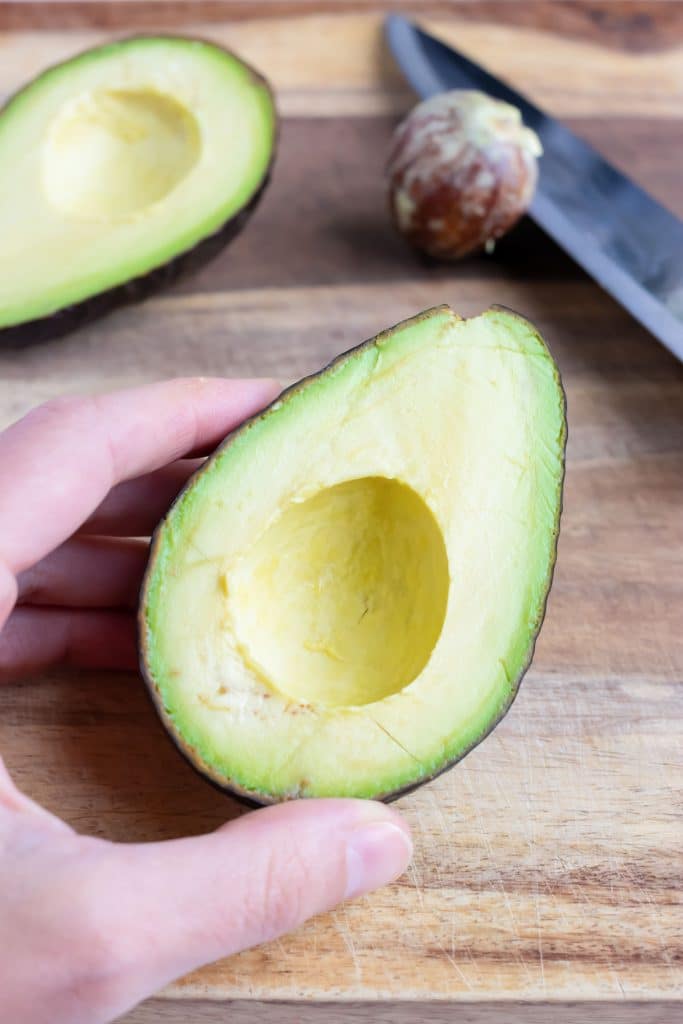
4. Rotate and Remove
Holding the knife in one hand and the avocado half in the other, gently twist the pit until it loosens. It should pop right out, still embedded in the blade of the knife.
If it doesn’t work on the first try, you may need to hit the pit again to go a little deeper with the knife. Using a sharp knife at this stage is helpful, as cuts tend to be cleaner and go deeper on the first try.
The pit can be removed from the knife by carefully pressing on it with your thumb and pointer finger, from the non-sharp side of the blade. A paper towel can be laid across the knife to protect your fingers from avocado residue, but it may make it harder to see the pit.
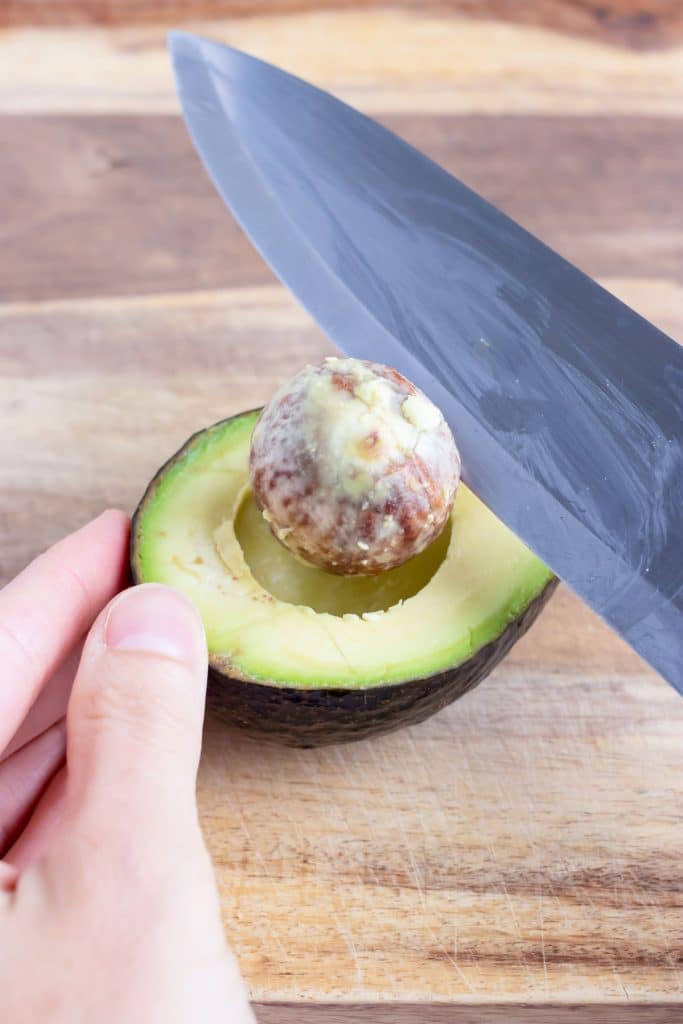

5. Cut into Slices and Cubes
At this stage, it’s recommended to use a smaller, more dull knife for better control. This lessens the likelihood of the blade slipping and cutting through your hand or the avocado’s skin.
Be very careful if slicing the avocado while holding it in your hand. If doing this, use a pretty dull butter knife.
For safety, it’s also recommended to set it down on the cutting board for this step.
To make slices, use a small paring knife to cut thin vertical slices into the avocado while it’s still inside the skin.
For cubes, cut slightly thicker strips, about ½-inch wide. First slice either horizontally or vertically, then rotate the avocado 90 degrees and cut in the opposite direction, crosswise.
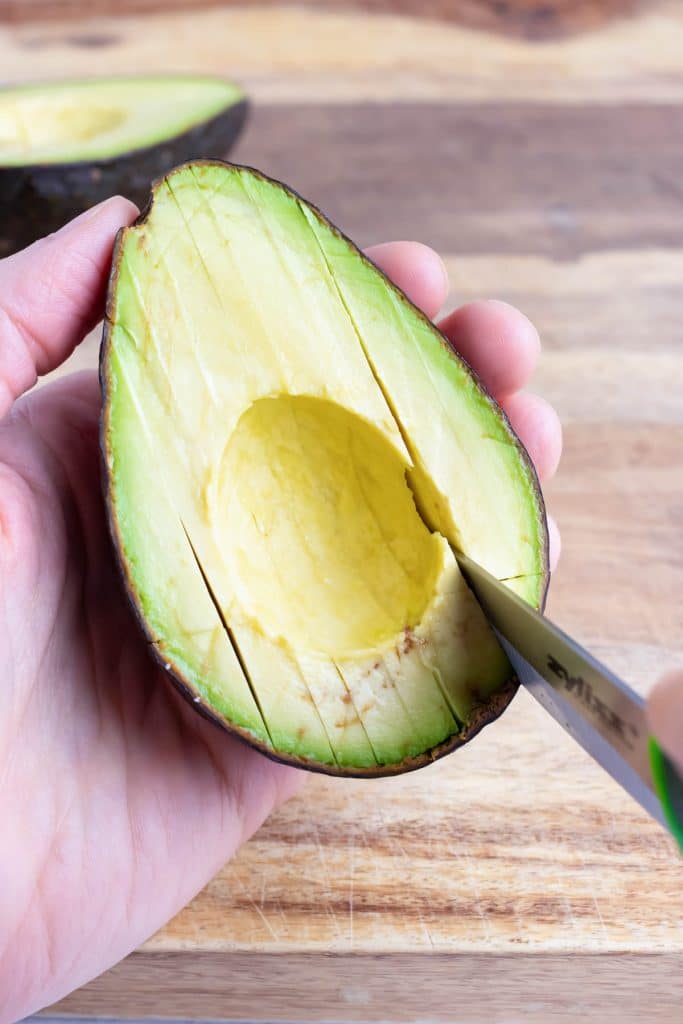
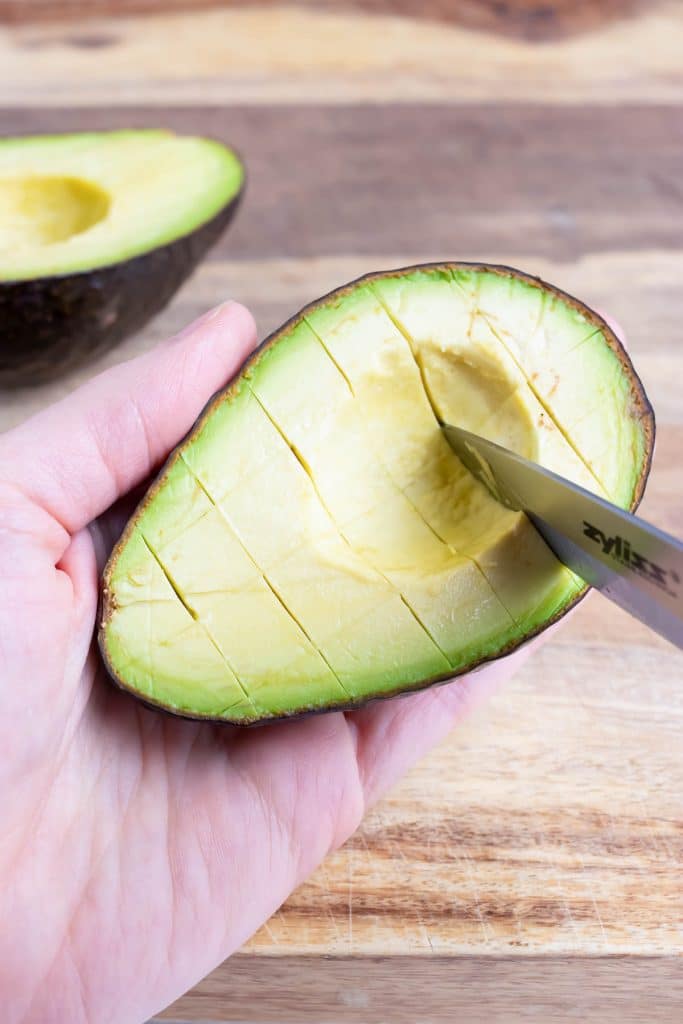
6. Alternate Method: Quarter and Peel
If holding the avocado while cutting and scooping it seems intimidating, there’s another method you can safely use.
Once the avocado is cut in half, and the pit removed, halve each side lengthwise once more, making four even quarters. From there, it’s easy to remove and discard the skin with a spoon.
Place the avocado cut-side down on the cutting board, and either thinly slice or dice it as desired.
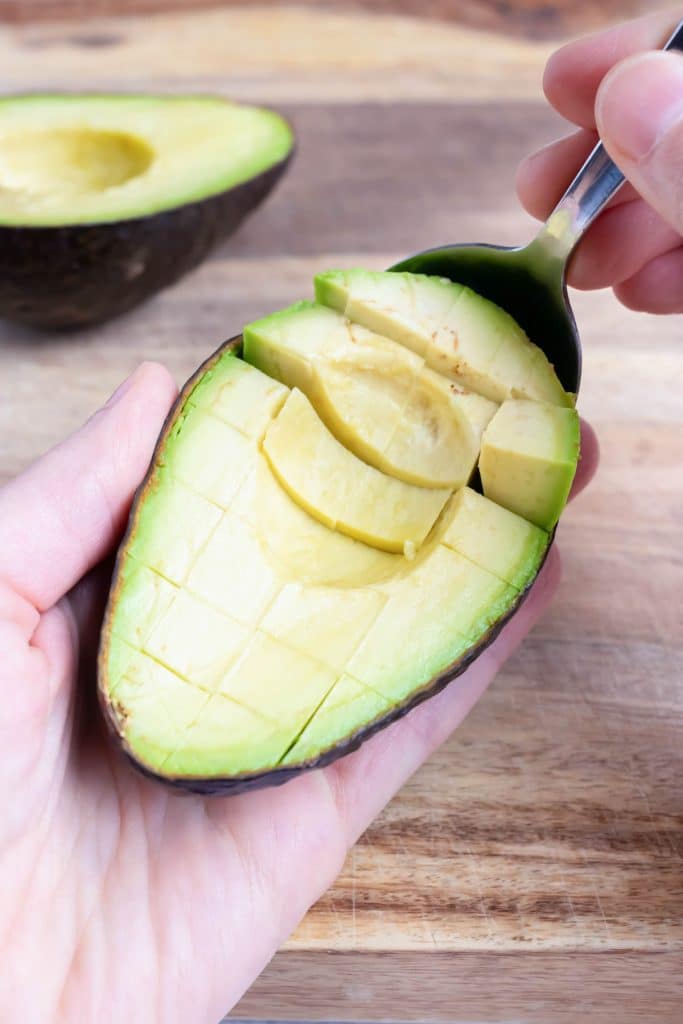
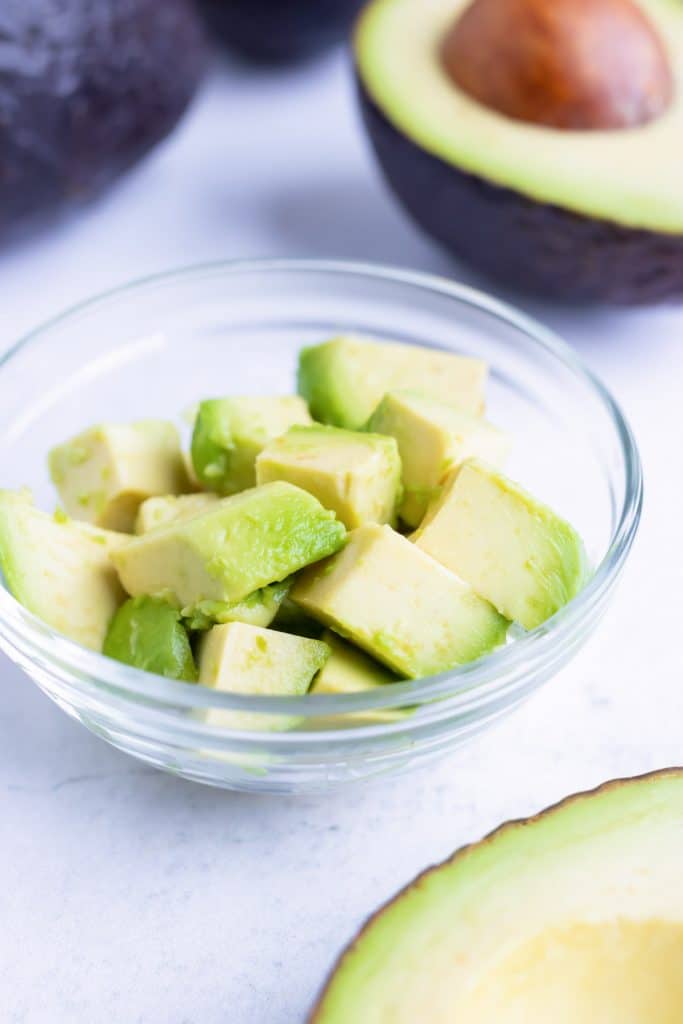
7. Scoop and Serve
Once the avocado is sliced to your liking, it’s time to remove it from the skin. Using a large spoon, gently scoop under the edge of the skin and begin loosening the pieces.
Follow the inside surface of the skin all the way down and around the avocado to ensure you get it all out. Be very gentle at this stage, so that the flesh isn’t damaged too badly.
Repeat the same step for the other half of the avocado. Now you can eat or prepare the fruit as a healthy snack, as guacamole, on toast, and many, many more options!
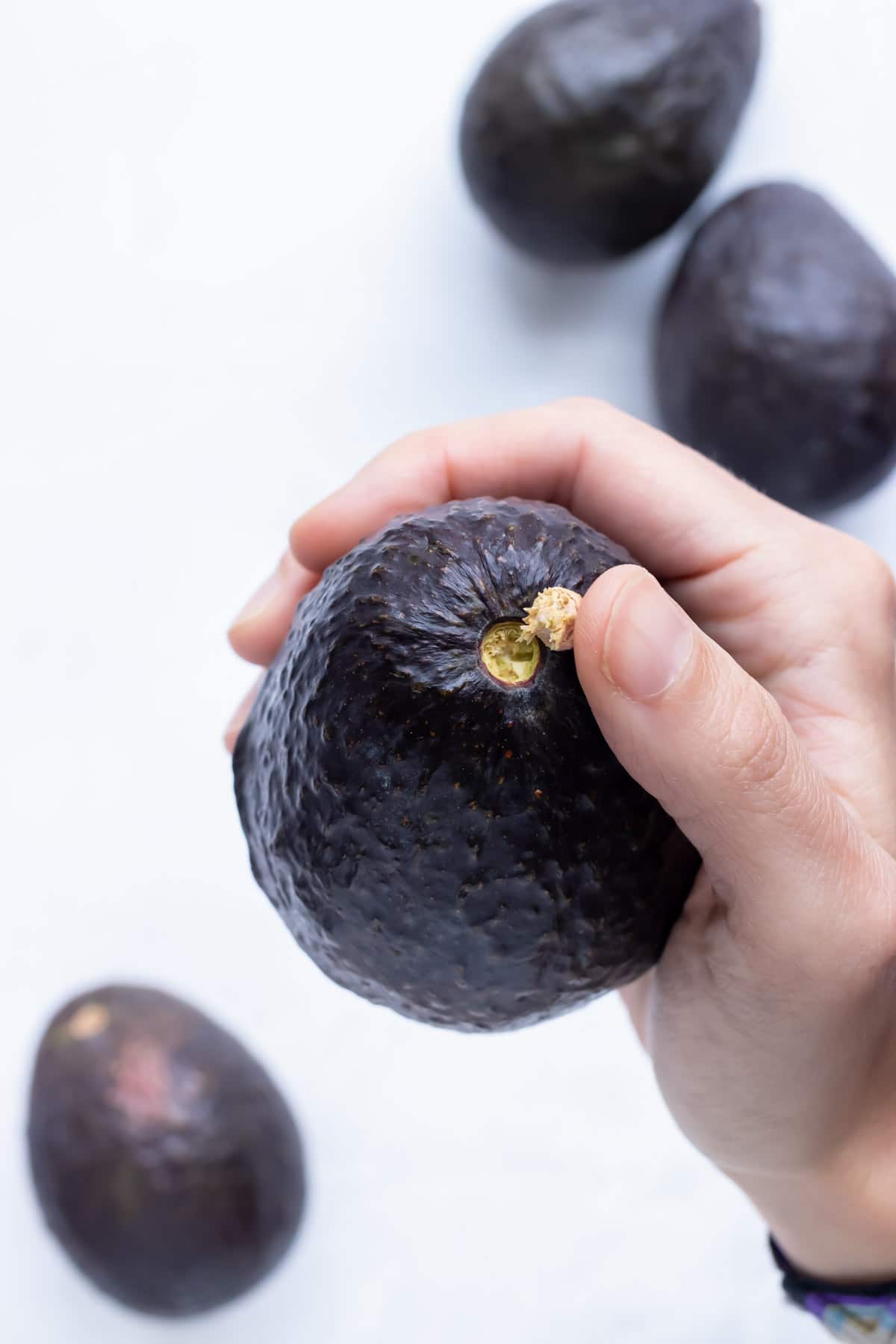
How to Pick Avocados
When selecting avocados at the grocery store there are three things you’ll want to look for in order to pick the best ones:
- Firmness. Avocados are best to eat when they are slightly softened, but not completely mushy. You’ll want them to give a little bit when you apply firm but gentle pressure. Buy slightly harder, less ripe avocados if you are planning to use them a few days after purchasing.
- Stem. A quick trick I like to use to confirm an avocado’s ripeness is to peel back the stem. If it is a beautiful green underneath and the stem peels easily, the avocado is ripe and ready to eat.
- Color. Avocados with a darker skin are generally ripe and ready to eat. Lighter, more green avocados can normally use a few more days to ripen fully.
How to Store an Avocado
To store an avocado, it’s best to use freshly sliced avocado immediately after cutting. However, unskinned halves can be wrapped in plastic wrap, gently pressed down to cover the exposed flesh, to prevent browning. It can be stored in the fridge like this for up to 2 days.
How to Freeze an Avocado
To freeze an avocado, place cut pieces on a wax paper-lined baking sheet, and freeze for up to 2 hours, then transfer to a freezer-safe bag with as much air removed as possible. Avocados can be frozen in slices, chunks, or as a puree, mixed or tossed with lemon or lime juice to prevent browning. Like this, avocado can be frozen for up to 3-4 months.
Frozen avocado should be thawed in the fridge or at room temperature. Heating avocado can turn it mushy and bitter, so this should be avoided.
FAQs
Yes, avocados actually taste best when served in their raw uncooked form! When heated, they can develop a bitter flavor and mushy texture. Whether flavored with citrus or sprinkled with salt, raw avocado is ready to eat as soon as it’s been cut!
If your avocados are still unripe, leave them out at room temperature until they are ripe and ready to eat. If you have some perfectly ripe avocados that you won’t be able to get to for a few days, pop them into the refrigerator. Cold temperatures slow down the ripening process and will keep your avocados fresh until you’re ready to eat them.
Sliced avocado will quickly start turning brown due to a process called oxidation, where the flesh is exposed to the air, generating an enzymatic reaction. To prevent this, cut avocado should be quickly mixed or tossed in lemon or lime juice, as it lowers the pH level and stops the browning process. This is why guacamole retains its light green color, as it’s often mixed with citrus juice for flavoring.
To give a cut avocado more time to ripen, leave the pit inside and rub both halves with lemon juice. Press them tightly together, and wrap it firmly in plastic wrap, so that no air can reach the flesh, then store it in the fridge for another few days. Some browning and softening may occur, but it can still most likely be salvaged.
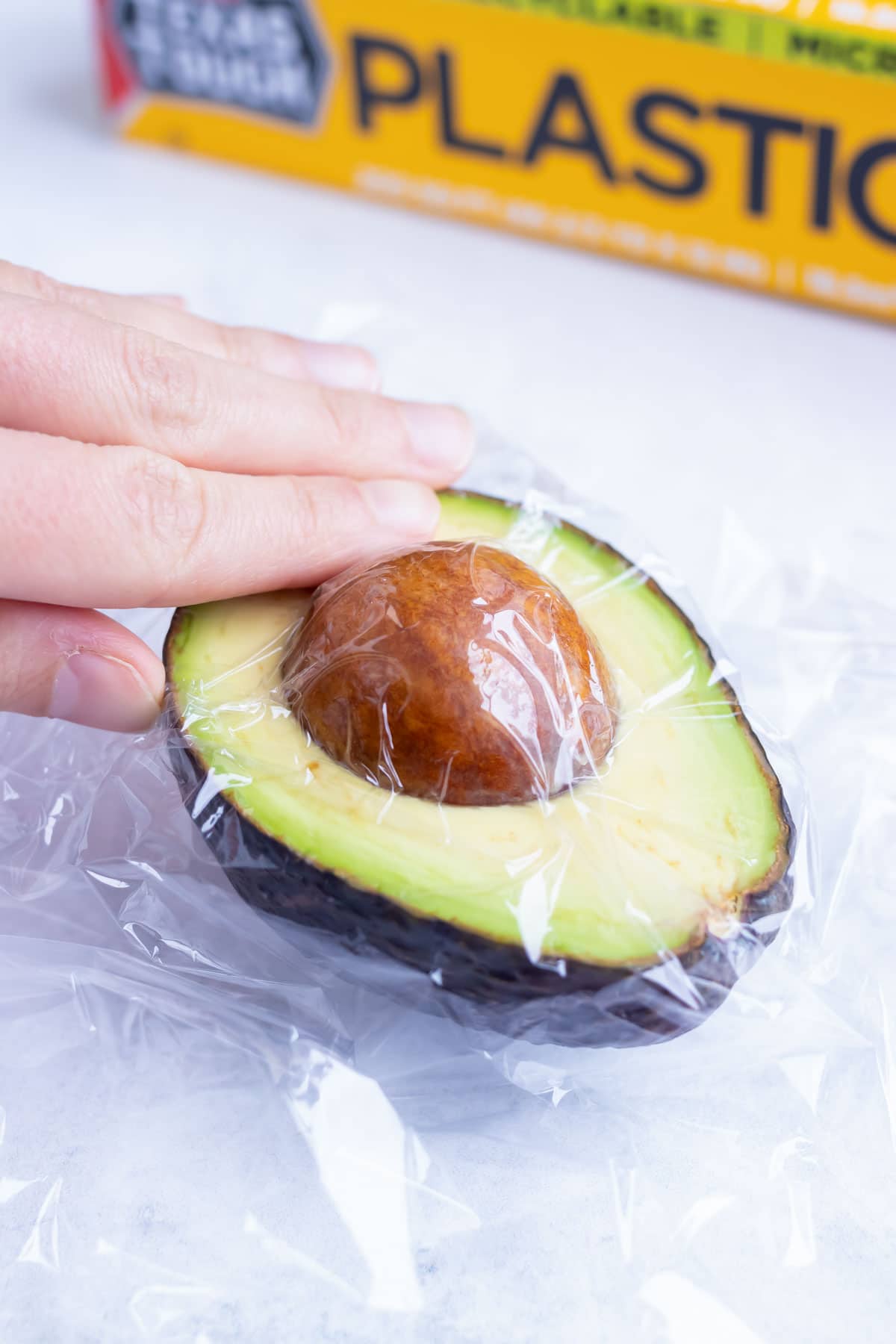
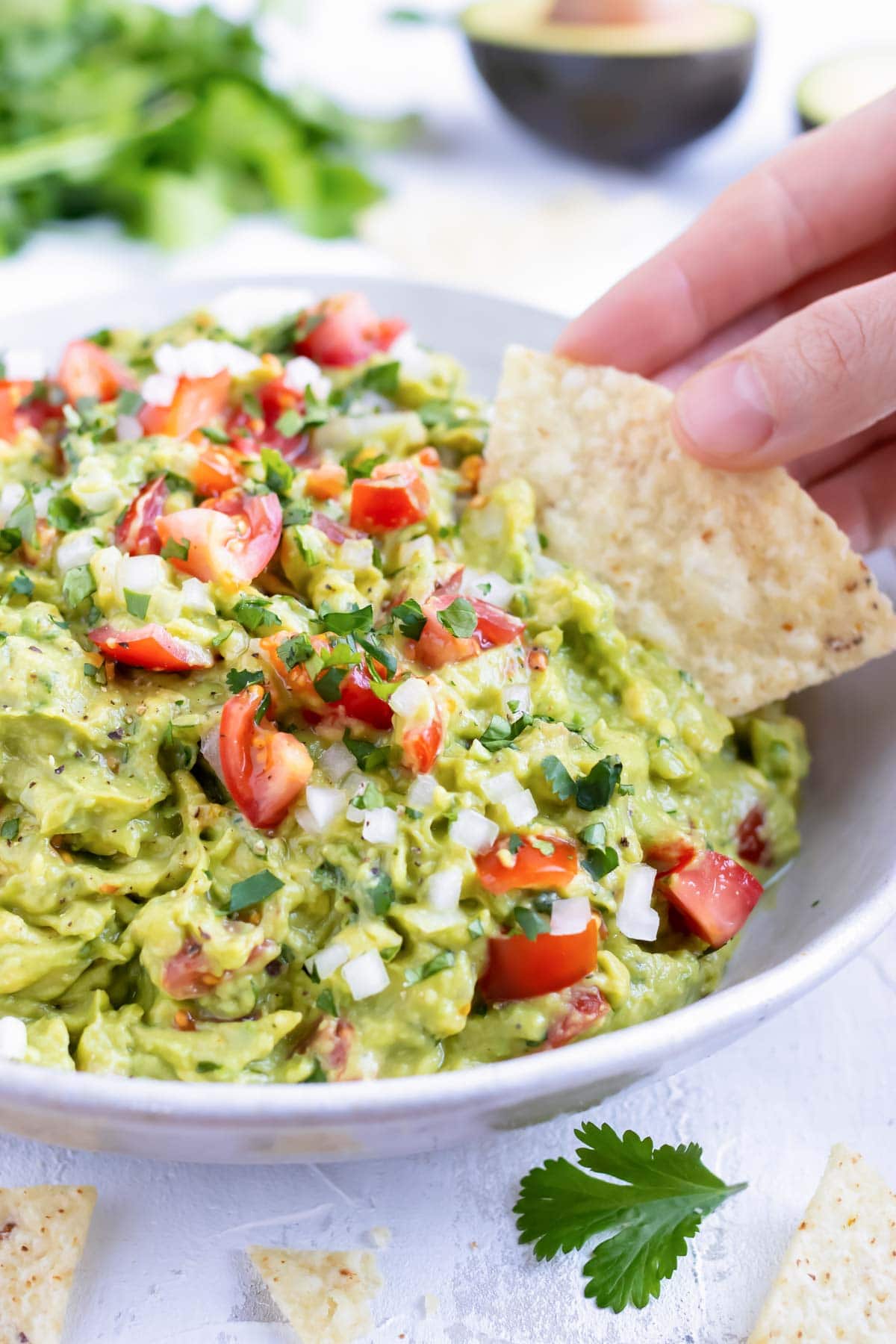
More Avocado Recipes
There are so many ways you can use this versatile fruit, including these amazing recipes:
- Avocado Corn Salad
- Homemade Guacamole
- Vegan Avocado Pesto
- Roasted Cauliflower Tacos.
- Avocado Egg Salad
- Blackened Fish Tacos with Avocado Sauce
- Massaged Kale Salad with Avocado
- Avocado Fries
- Mango Salsa with Avocado
Tap stars to rate!
How to Cut an Avocado (Easy Method!)

email this recipe!
Ingredients
- 1 avocado
Instructions
- Slice the avocado lengthwise until you feel the knife hit the pit. Turn the avocado on its side and spin it while continuing to cut it in half with the knife.1 avocado
- Twist the two halves to separate them once the avocado is completely cut down the center.
- Carefully hit the pit with your knife to remove it. Rotate the pit until it loosens and lift up.
- Remove the pit from the knife by pressing on it from the unsharpened side with your thumb and pointer finger until it dislodges.
Classic Method
- For slices, use a knife to cut thin slices of avocado.
- For cubes, cut slightly thicker strips, about ½-inch wide. Rotate the avocado 90-degrees and cut additional ½-inch wide slices.
- Once your slices/cubes are done, simply scoop them out using a large spoon.
Alternative Method
- Once the avocado is cut in half and the pit is removed, cut each halve in half lengthwise.1 avocado
- Remove and discard the skin from each quarter.
- Place the avocado cut-side down on a cutting board and either thinly slice it or dice it.
Tap stars to rate!
Video
Notes
Storage Directions
Unskinned halves can be wrapped in plastic wrap, gently pressed down to cover the exposed flesh, to prevent browning. It can be stored in the fridge like this for up to 2 days. Avocados can be frozen in slices, chunks, or as a puree, mixed or tossed with lemon or lime juice to prevent browning. Place cut pieces on a wax paper-lined baking sheet, and freeze for up to 2 hours, then transfer to a freezer-safe bag with as much air removed as possible. Like this, avocado can be frozen for up to 3-4 months. Frozen avocado should be thawed in the fridge or at room temperature. Heating avocado can turn it mushy and bitter, so this should be avoided. Recipe Tips- Use citrus juice. Either tossing or mixing cut avocado with lemon or lime juice keeps it green and fresh, and adds amazing flavor.
- Ripen it quickly. One way to gently speed the ripening process is to put an unripe avocado in a sealed paper bag with an apple, banana, or kiwi for 2-4 days.
- Think outside the kitchen. Delicious as they are, avocados also make an amazing ingredient for hair and face masks, and other moisturizing beauty products!
- Check for ripeness. Along with the color and texture of the avocado, ripeness can be checked by whether the stem comes off easily and is green underneath.
- Freeze into blocks. Pureed avocado frozen in ice cube trays makes for a creamy, dairy-free addition to smoothies.
Nutrition
Nutrition information is automatically calculated, so should only be used as an approximation.

